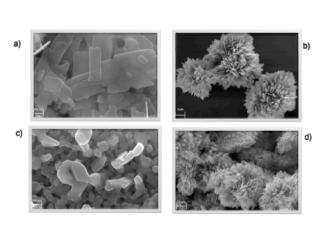
Aging resistance of an experimental zirconia-toughened alumina composite for large span dental prostheses: Optical and mechanical characterization
Abstract:
Purpose
To synthesize a zirconia-toughened alumina (ZTA) composite with 85% alumina matrix reinforced by 15% zirconia and to characterize its optical and mechanical properties before and after artificial aging, to be compared with a conventional dental zirconia (3Y-TZP).
Material and methods
After syntheses, ZTA and 3Y-TZP powders were uniaxially and isostatically pressed. Green-body samples were sintered and polished to obtain 80 disc-shaped specimens per group (12 × 1 mm, ISO 6872:2015). The crystalline content and microstructure were characterized by X-ray diffraction (XRD) and scanning electron microscope (SEM). Optical properties were determined by the calculation of contrast ratio (CR) and translucency parameter (TP) using reflectance data. Mechanical properties were assessed by Vickers hardness, fracture toughness and biaxial flexural strength test (BFS). All analyses were conducted before and after artificial aging (20h, 134 °C, 0.22 MPa). Optical parameters and microhardness differences were evaluated through repeated-measures analysis of variance (p < 0.05). BFS data were analyzed using Weibull statistics (95% CI).
Results
The synthesis of the experimental ZTA composite was successful, with 98% of theoretical density, as shown in the SEM images. XRD patterns revealed typical zirconia and alumina crystalline phases. ZTA optical properties parameters showed no effect of aging, with a high CR and low TP values denoting a high masking-ability. 3Y-TZP presented lower masking-ability and aging significantly affected its optical properties. ZTA Vickers hardness, fracture toughness and Weibull parameters, including characteristic stress and Weibull modulus were not influenced by aging, while 3Y-TZP presented a significant decrease in characteristic stress and increase in fracture toughness after aging. The ZTA probability of survival for missions of 300 and 500 MPa was estimated at ~99% validating its use for 3-unit posterior fixed dental prostheses (FDP), and no different from conventional 3Y-TZP. At high-stress mission (800 MPa) a significant decrease in probability of survival was observed for aged 3Y-TZP (84%) and for immediate and aged ZTA (73 and 82% respectively).
Conclusion
The ZTA composite presented a dense microstructure, with preservation of the crystalline content, optical and mechanical properties after artificial aging, which encourages future research to validate its potential use for large span FDP.
Author(s): Benalcázar Jalkha, E.B.; Bergamo, E.T.P.; Monteiro, K.N.; Cesar, P.F.; Genova, L.A.; Lopes, A.C.O.; Lisboa Filho, P.N.; Coelho, P.G.; Santos, C.F.; Bortolin, F.; Piza, M.M.T.; Bonfante, E.A.
Journal of the Mechanical Behavior of Biomedical Materials
Published: April 2020, Volume 104, 103659




